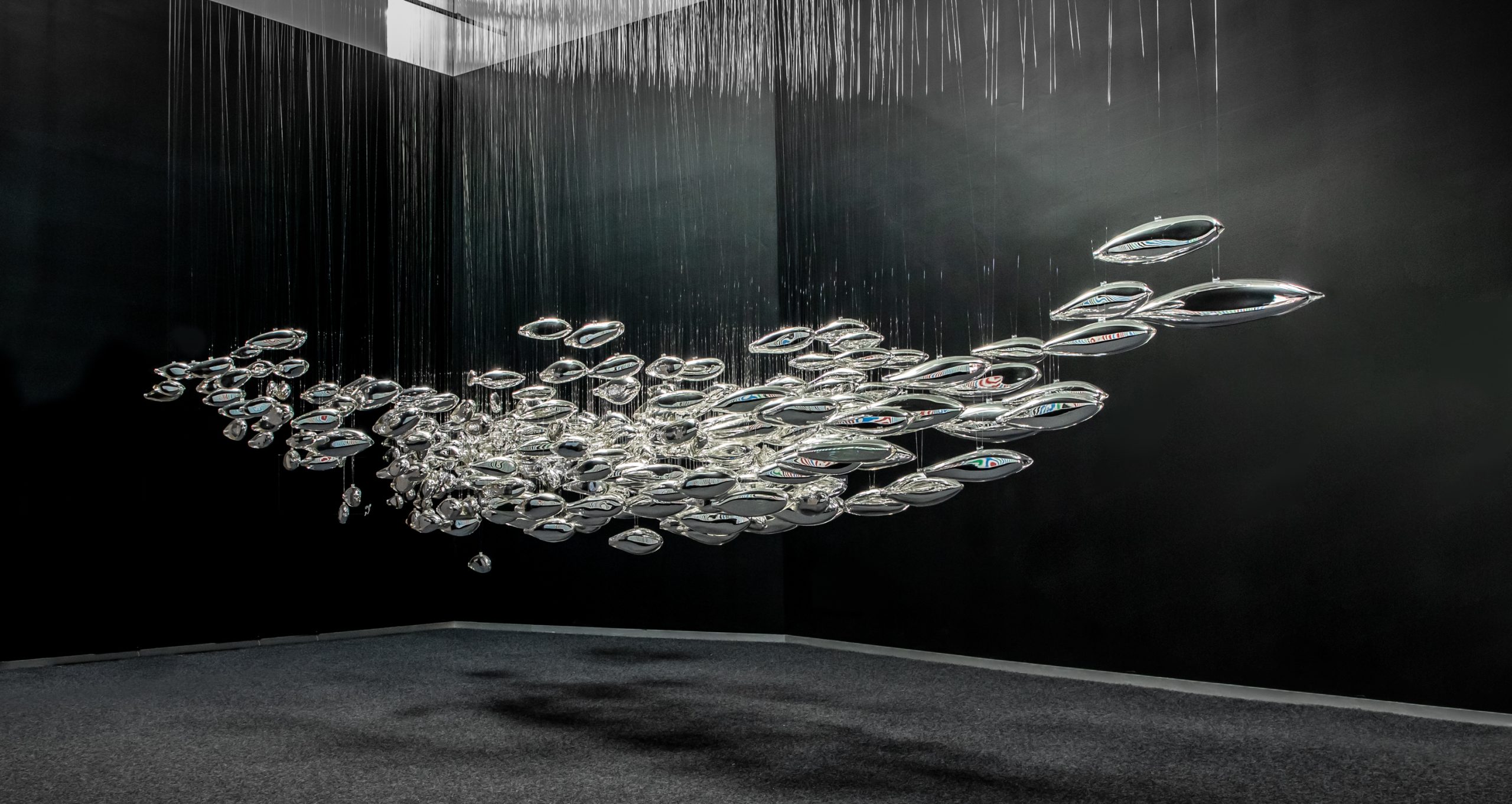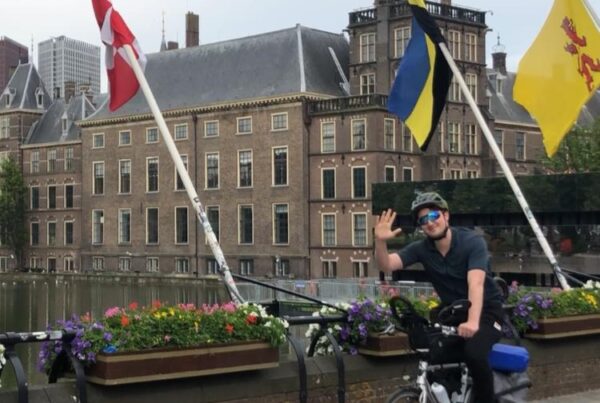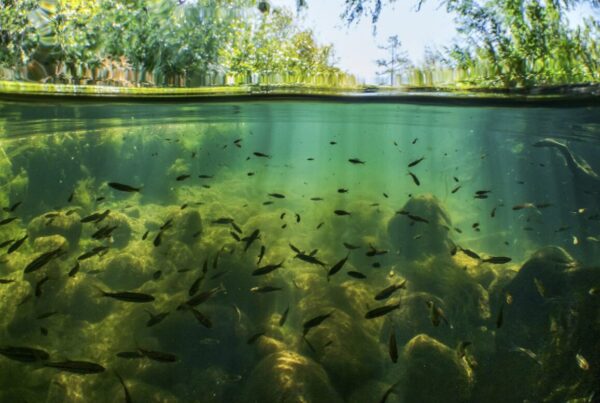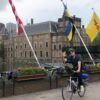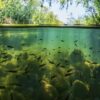
A Q&A with artist, Joseph Rossano, Creator of Salmon School.
‘Salmon School’ is a large sculpture which highlights the plight of wild salmon and the importance of salmon conservation. The art installation will be showcased at the Platinum Jubilee exhibition at Balmoral Castle in the UK between April 1 to August 2, 2022. The installation is also a WFMD event! Read on for an exclusive interview with the artist:
Please can you introduce the Salmon School project?
‘Salmon School’ is a contemporary sculpture, an art installation consisting of 300 mirrored glass forms, suspended in the air to appear as a school of wild salmon. The concept behind the installation is to highlight the plight of wild salmon and the importance of salmon conversation, as climate change and loss of biodiversity threaten their existence in the wild.
What is the history around The Salmon School?
‘Salmon School’ was first conceived and shown in the US Pacific Northwest, and then showcased in November 2021 at COP26, the UN Climate Change Conference in Glasgow. For me, and everyone involved in the creation of ‘Salmon School’, our aim is to highlight the need to save wild salmon from the threat of extinction. The installation presents the iconic migratory fish – which need cold, clean water to thrive – as a key bellwether of global climate change in the Northern hemisphere. We are honoured that the installation is now taking centre stage at the Platinum Jubilee exhibition in the Queen’s Ballroom at Balmoral Castle between April 1 and August 2 2022.
What is the main message that is being conveyed through this collaboration of art and conservation?
Importantly, ‘Salmon School’ is an international, collaborative project that contextualises the finality of a what seems to be an infinite natural resource. ‘Salmon School’ fosters environmental awareness, bringing together diverse communities for a greater good — cold, clean water – enhanced through a synthesis of science and art. Embracing art’s ability to disarm, to make something beautiful — a sculpture mimicking an ideal, a restored ecosystem — and involving the River Dee Trust and local schools in the collection of environmental DNA, the project achieves measurable change through its actions and initiatives.
Made from glass – which is an endlessly recyclable material – ‘Salmon School’ reminds us that art need not wastefully consume resources. The sculpture’s supporting structure, created in partnership with The Balmoral Estate, Eckersley O’Callaghan, Tor Workshop and Rossano Studios, is itself recycled, made from wind-felled Balmoral spruce.
Why was Balmoral Castle chosen as a destination for the salmon school on its own migratory journey?
We are grateful to the Balmoral Estate for hosting ‘Salmon School’. The artwork forms part of an exhibition titled ‘Life at Balmoral’, which celebrates all activity at Balmoral “from the River to the Royals”, and provides a fitting tribute to the decades of salmon conservation work supported by The Queen, the Royal Family and the Balmoral Estate on the River Dee over the last 170 years.
I know that the Balmoral Estate works closely with the River Dee Trust to deliver practical salmon restoration projects to help protect the endangered fish. Most recently, across Deeside, the River Dee Trust and Dee District Salmon Fishery Board have introduced a ‘One Million Trees’ campaign to plant riverbank trees, to help restore the Dee and save its iconic salmon. Trees have multiple benefits in helping wild salmon to thrive, including providing shade over the water, nourishment through leaves and insects, and preventing erosion by helping to stabilise riverbanks. The Balmoral Estate have already planted 300,000 trees along the River Dee in the last five years.
As a salmon fisherman myself, I see that there is immense environmental stewardship work that is going on along the River Dee to protect wild salmon. This includes using windblown trees to create large wooden structures in the rivers on the Balmoral Estate, offering a variety of salmon habitats, giving shelter from bad weather and trapping nutrients. Small wooden dams have also been created in the Estate’s smaller streams to help river flows in times of flood and drought. The Balmoral Estate hopes to create the best conditions for the salmon to thrive and is delighted to present this new installation to highlight the importance of wild salmon conservation.


